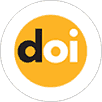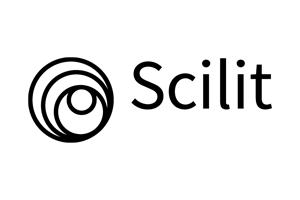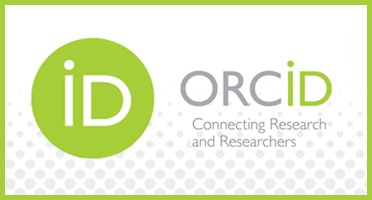
Journal of Global Engineering and Sciences
Open AccessISSN:3067-8099
The Journal of Global Engineering and Sciences (JGES) aims to provide a platform for high-quality interdisciplinary research and innovation that addresses global engineering challenges and scientific advancements.
Aims
The Journal of Global Engineering and Sciences (JGES) provides a platform for high-quality interdisciplinary research that addresses global engineering challenges and scientific advancements.
- Promote the exchange of knowledge and ideas in engineering and sciences on a global scale.
- Foster collaboration between researchers, industry professionals, and policymakers.
- Highlight advancements contributing to sustainable development and technological progress.
- Encourage integration of engineering solutions with scientific research to tackle complex global issues.
Scope
Engineering Innovations
- Advancements in mechanical, electrical, civil, and chemical engineering.
- Optimization and implementation of engineering systems.
- Engineering solutions for energy efficiency and renewable energy.
- Applications of robotics, automation, and IoT in engineering projects.
Scientific Research and Integration
- Interdisciplinary studies combining engineering with physics, chemistry, and biology.
- Theoretical and applied research in material science and nanotechnology.
- Innovations in computational modeling and simulation techniques.
Global and Sustainable Engineering Practices
- Sustainable infrastructure development and green building technologies.
- Engineering solutions addressing climate change, pollution, and waste management.
- Innovations in water resource management and clean energy technologies.
- Case studies on global engineering projects for disaster mitigation and recovery.
Technology and Innovation
- Emerging technologies like AI, blockchain, and quantum computing in engineering.
- Research on additive manufacturing, 3D printing, and advanced manufacturing processes.
- Role of engineering in space exploration and biotechnology.
- Smart city initiatives and urban planning integration.
Global Collaboration and Policy
- Studies on international engineering standards and their implementation.
- Global engineering education and capacity-building initiatives.
- Collaborative research efforts addressing cross-border engineering challenges.
Editorial Policies
1. Scope & Focus
Bryn Publishers is committed to publishing high-quality academic research across a diverse range of disciplines. Our journals cover areas such as social sciences, business, education, engineering, medicine, and interdisciplinary research. We strive to provide a platform for innovative, impactful, and rigorous scholarship.
2. Peer Review Policy
All submitted manuscripts undergo a rigorous peer review process to ensure academic integrity and research quality. Bryn Publishers follows a double-blind peer review system, where both the authors and reviewers remain anonymous. Reviewers are selected based on their expertise and relevance to the manuscript’s subject area. The editorial team ensures fair and unbiased evaluations, maintaining transparency throughout the process.
3. Ethical Guidelines
- Plagiarism: All submissions are checked for plagiarism using advanced detection tools. Plagiarized content will be rejected outright.
- Authorship: All listed authors must have significantly contributed to the research. Any disputes regarding authorship must be resolved before submission.
- Conflicts of Interest: Authors, editors, and reviewers must disclose any potential conflicts of interest that may influence the publication process.
- Data Integrity: Any data manipulation or falsification is strictly prohibited.
4. Open Access & Copyright
Bryn Publishers follows an open access model, ensuring free and unrestricted access to published research. Authors retain copyright under a Creative Commons Attribution (CC BY) license, allowing for broad dissemination and reuse of work with proper citation. Authors can also choose traditional publishing models with specific licensing terms.
5. Manuscript Submission & Processing
- Initial Screening: To check for compliance with submission guidelines.
- Peer Review: Assignment to expert reviewers for feedback and recommendations.
- Editorial Decision: Based on reviewers’ feedback, manuscripts may be accepted, revised, or rejected.
- Production & Publication: Accepted articles are copyedited, typeset, and published online.
6. Editorial Board Responsibilities
- Ensuring a fair and timely review process.
- Maintaining confidentiality of submitted materials.
- Addressing ethical concerns, including plagiarism and research misconduct.
- Making impartial publication decisions based on scholarly merit.
7. Retraction & Correction Policies
- Corrections: Minor errors that do not affect the overall validity of research will be corrected with an erratum or corrigendum.
- Retractions: In cases of research misconduct, plagiarism, or significant errors affecting the conclusions, articles may be retracted with an official statement explaining the reasons.
- Editorial Expressions of Concern: Issued when investigations into potential ethical issues are ongoing.
These editorial policies ensure that Bryn Publishers maintains the highest standards of academic publishing, fostering trust and credibility within the research community.
Manuscript Preparation Guidelines
Bryn Publishers welcomes high-quality scholarly submissions across various disciplines. To ensure a smooth publication process, authors must adhere to the following manuscript preparation guidelines:
1. General Formatting
- Manuscripts must be submitted in Microsoft Word (DOC or DOCX) format.
- Use Times New Roman, 12-point font, and 1.5 line spacing.
- Set margins to 1 inch on all sides.
- Include page numbers in the bottom right corner.
- Use consistent heading styles (e.g., Heading 1 for section titles, Heading 2 for subsections).
2. Manuscript Structure
A typical manuscript should include the following sections:
- Title Page: Title of the manuscript, author(s) name, affiliation(s), and corresponding author’s email.
- Abstract: A concise summary (150–250 words) covering the research purpose, methods, key findings, and conclusions.
- Keywords: 4–6 relevant keywords for indexing purposes.
- Introduction: Clearly state the research problem, objectives, and significance.
- Literature Review: A brief review of relevant research and theoretical background.
- Methodology: Detailed description of research design, data collection, and analysis methods.
- Results: Presentation of findings using tables, figures, or charts where applicable.
- Discussion: Interpretation of results, comparison with previous studies, and implications.
- Conclusion: Summary of key findings, limitations, and suggestions for future research.
- References: A complete list of cited works in APA or Vancouver style (as required by the journal).
3. Figures, Tables, and Equations
- All figures and tables must be numbered consecutively (e.g., Table 1, Figure 2).
- Captions should be placed above tables and below figures.
- Equations should be numbered sequentially and formatted using MathType or LaTeX.
4. Citation and Referencing
- Bryn Publishers accepts only APA (7th edition) and Vancouver referencing styles.
- Use in-text citations and ensure all references are listed at the end of the manuscript.
- Reference management tools (e.g., EndNote, Zotero, Mendeley) are recommended.
5. Ethical Considerations
- Ensure originality and proper citation of sources.
- Disclose any conflicts of interest.
- Obtain necessary permissions for copyrighted materials.
- Adhere to ethical guidelines for research involving human or animal subjects.
6. Submission Process
- All manuscripts must be submitted via the Bryn Publishers online submission system.
- Ensure a cover letter is included, outlining the significance of the research and its contribution.
- Manuscripts will be acknowledged within 48 hours of submission.
7. Review and Revision
- Manuscripts undergo double-blind peer review.
- Authors may be required to revise their manuscripts based on reviewer feedback.
- Revised manuscripts must include a point-by-point response to reviewers’ comments.
Following these guidelines will help expedite the review and publication process. For further inquiries, please contact the editorial team at info@brynpublishers.com.
Reporting Guidelines
Authors are encouraged to adhere to the following when reporting research:
- CARE: For case reports
- ARRIVE: For animal research
- COREQ: For qualitative studies
- MOOSE: For meta-analyses of observational studies
- STARD / TRIPOD: For diagnostic accuracy studies
- TREND: For non-randomized trials
- STROBE: For observational studies
- PRISMA: For systematic reviews and meta-analyses
- STREGA: For genetic association studies
- CHEERS: For economic evaluations
- CONSORT: For randomized controlled trials
Role of Editor-in-Chief (EiC)
The Editor-in-Chief (EiC) at Bryn Publishers is responsible for overseeing the editorial and peer review process to ensure the publication of high-quality academic research. The EiC plays a crucial role in maintaining the integrity, credibility, and academic excellence of our journals.
1. Editorial Oversight
- Define the vision, scope, and strategic direction of the journal.
- Ensure adherence to Bryn Publishers' editorial policies and ethical standards.
- Uphold high-quality peer review and publication practices.
2. Peer Review Management
- Oversee the double-blind peer review process.
- Assign manuscripts to appropriate associate editors or reviewers.
- Make final editorial decisions based on reviewers’ feedback.
3. Content Development & Quality Assurance
- Ensure the publication of original, high-quality research.
- Monitor research trends to shape the journal’s focus.
- Provide guidance to authors to maintain scholarly excellence.
4. Editorial Board Leadership
- Recruit and coordinate editorial board and reviewers.
- Host regular board meetings for journal progress.
- Promote diversity and inclusivity in the editorial team.
5. Ethical and Integrity Standards
- Enforce COPE ethical guidelines.
- Address plagiarism, conflicts of interest, and misconduct.
- Handle corrections, retractions, and author disputes.
6. Author & Reviewer Engagement
- Encourage and support high-quality submissions.
- Recognize reviewer contributions.
- Offer training resources for authors and reviewers.
7. Journal Promotion & Indexing
- Promote visibility through indexing and outreach.
- Leverage social media and conferences for reach.
- Expand readership and citation impact.
8. Workflow & Publication Process
- Coordinate with production for timely publication.
- Oversee formatting and copyediting of manuscripts.
- Ensure smooth digital and print publication.
9. Innovation & Continuous Improvement
- Adopt new publishing technologies and practices.
- Streamline editorial workflows.
- Launch special issues based on emerging research needs.
The Editor-in-Chief’s leadership is essential to maintaining the journal’s academic reputation and ensuring a transparent, ethical, and rigorous publication process.
Roles and Responsibilities of Editorial Board Members (EBMs)
Editorial Board Members (EBMs) play a crucial role in maintaining the quality, integrity, and academic excellence of Bryn Publishers' journals. They provide expertise, oversee the peer review process, and contribute to the strategic development of the journal. The key responsibilities of EBMs include:
1. Manuscript Review & Peer Evaluation
- Conduct timely, constructive, and objective reviews of submitted manuscripts.
- Provide critical insights and recommendations to improve manuscript quality.
- Uphold the double-blind peer review process to ensure fairness and integrity.
2. Editorial Guidance & Decision-Making
- Assist the Editor-in-Chief in evaluating submissions for relevance, originality, and contribution to the field.
- Recommend high-quality manuscripts for acceptance, revision, or rejection.
- Ensure adherence to Bryn Publishers' editorial policies and ethical standards.
3. Ethical and Research Integrity
- Promote ethical publishing practices, including adherence to COPE guidelines.
- Identify and report any ethical concerns such as plagiarism, conflicts of interest, or data fabrication.
- Ensure research integrity by verifying the credibility of studies and sources.
4. Journal Development & Content Curation
- Suggest emerging research topics, special issues, and thematic focuses for the journal.
- Contribute editorials, review articles, or invited papers to enhance journal visibility.
- Assist in recruiting high-quality submissions from researchers and scholars.
5. Promotion & Outreach
- Advocate for the journal within the academic community and professional networks.
- Encourage leading scholars to submit their work and participate in the peer review process.
- Support efforts to increase the journal's visibility, citations, and impact factor.
6. Editorial Board Participation
- Actively engage in editorial board meetings and discussions on journal policies.
- Provide feedback on journal performance and suggest improvements.
- Collaborate with other board members to enhance editorial efficiency.
7. Peer Reviewer Recruitment & Mentorship
- Recommend qualified reviewers for manuscript evaluations.
- Mentor early-career researchers by guiding them in the peer review process.
- Ensure diversity and inclusivity in the selection of reviewers and contributors.
8. Contribution to Journal Indexing & Standards
- Support the journal's efforts in securing inclusion in prestigious indexing databases.
- Ensure adherence to international publishing standards and best practices.
- Provide insights on enhancing the journal's scholarly reputation and impact.
The Editorial Board Members play a vital role in shaping the direction of Bryn Publishers' journals. Their contributions ensure the dissemination of high-quality, peer-reviewed research that advances scholarly knowledge and maintains the journal's reputation for excellence.










| First Decision | 15 days |
| Final Decision | 40 days |
| Publication Type | Peer Reviewed |
| Publishing Model | Open Access |
| Journal Category | Global Engineering and Sciences |
| Publication Issues Frequency | Twice Per Year |
| APC | 300 US$ |